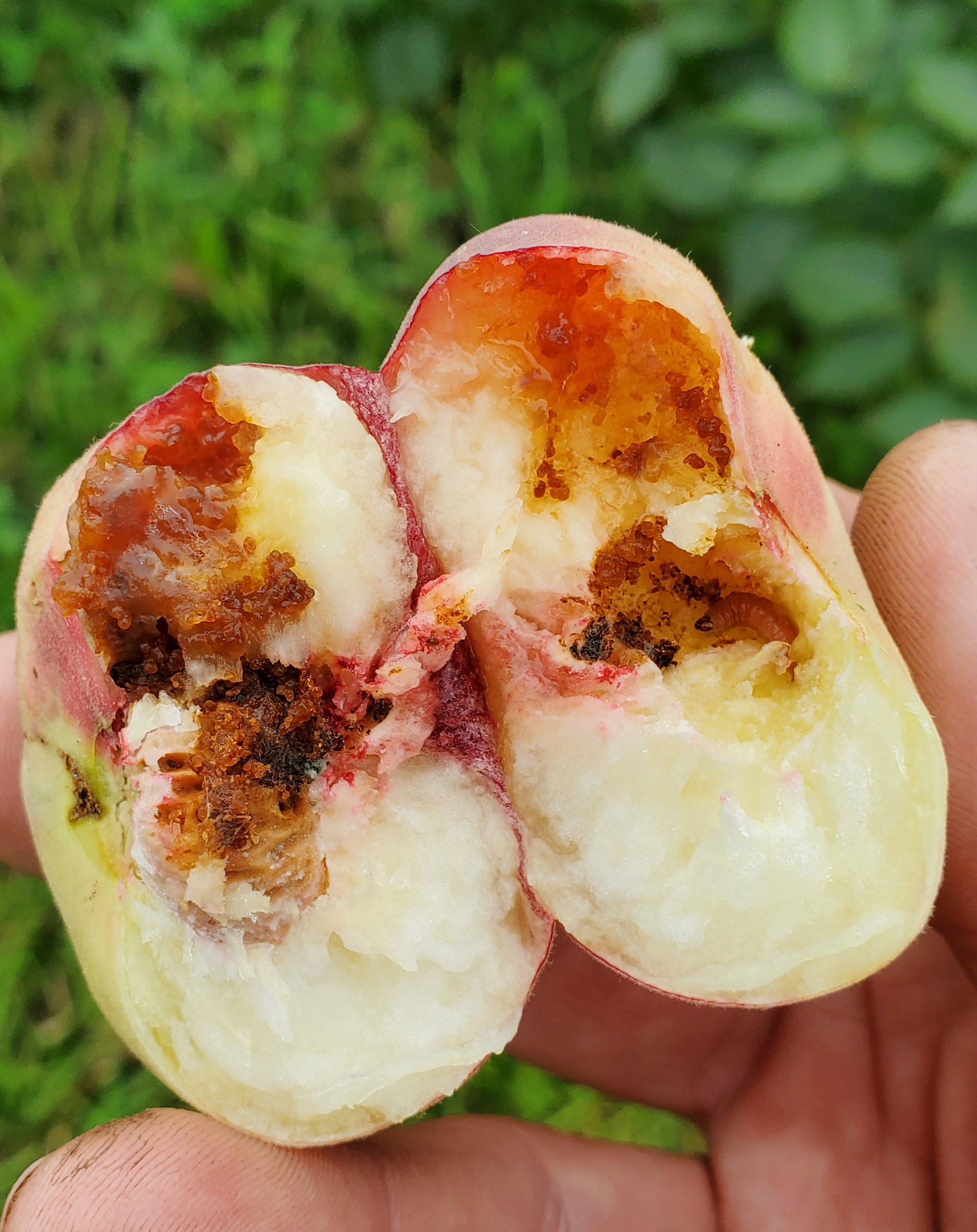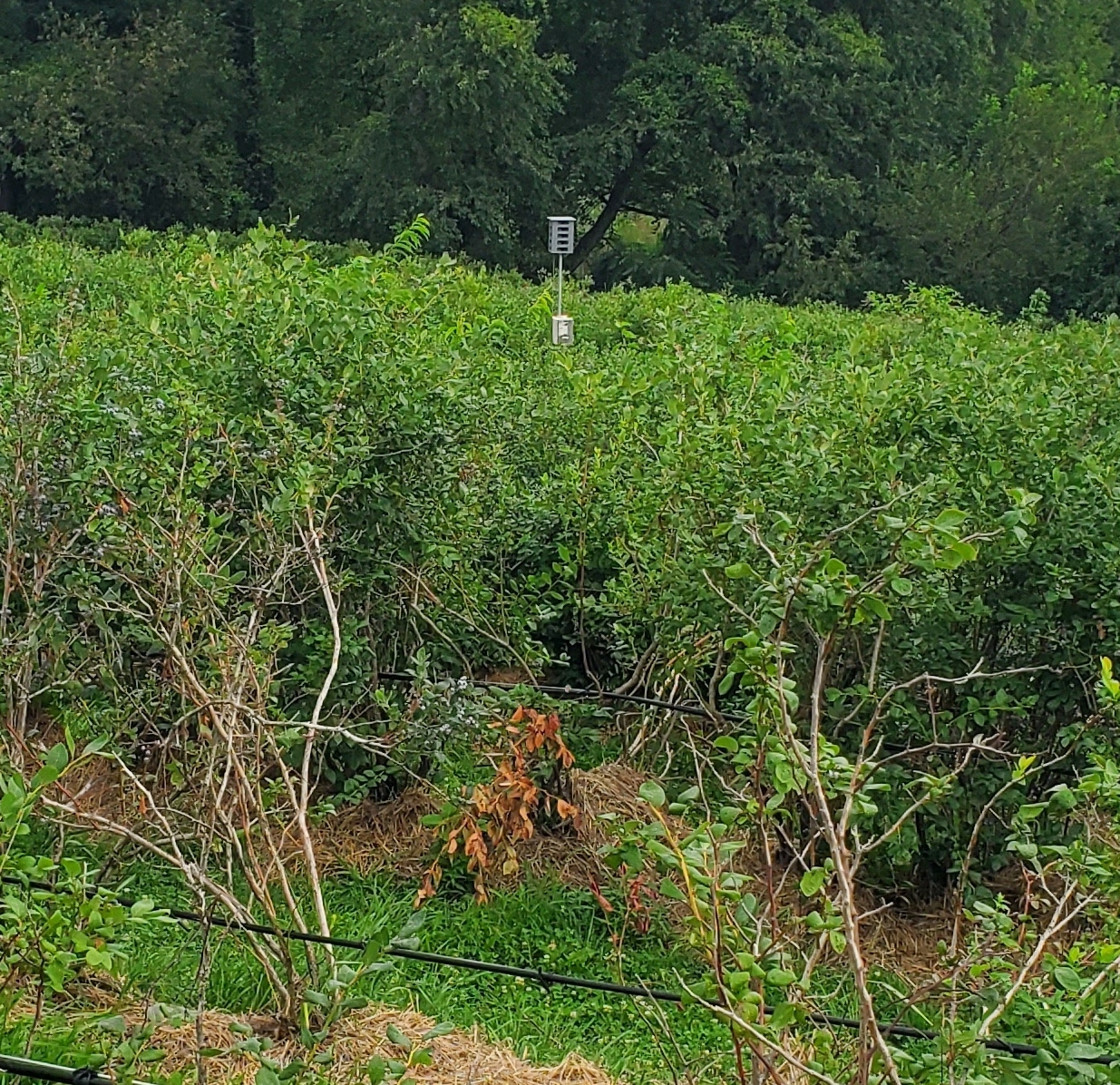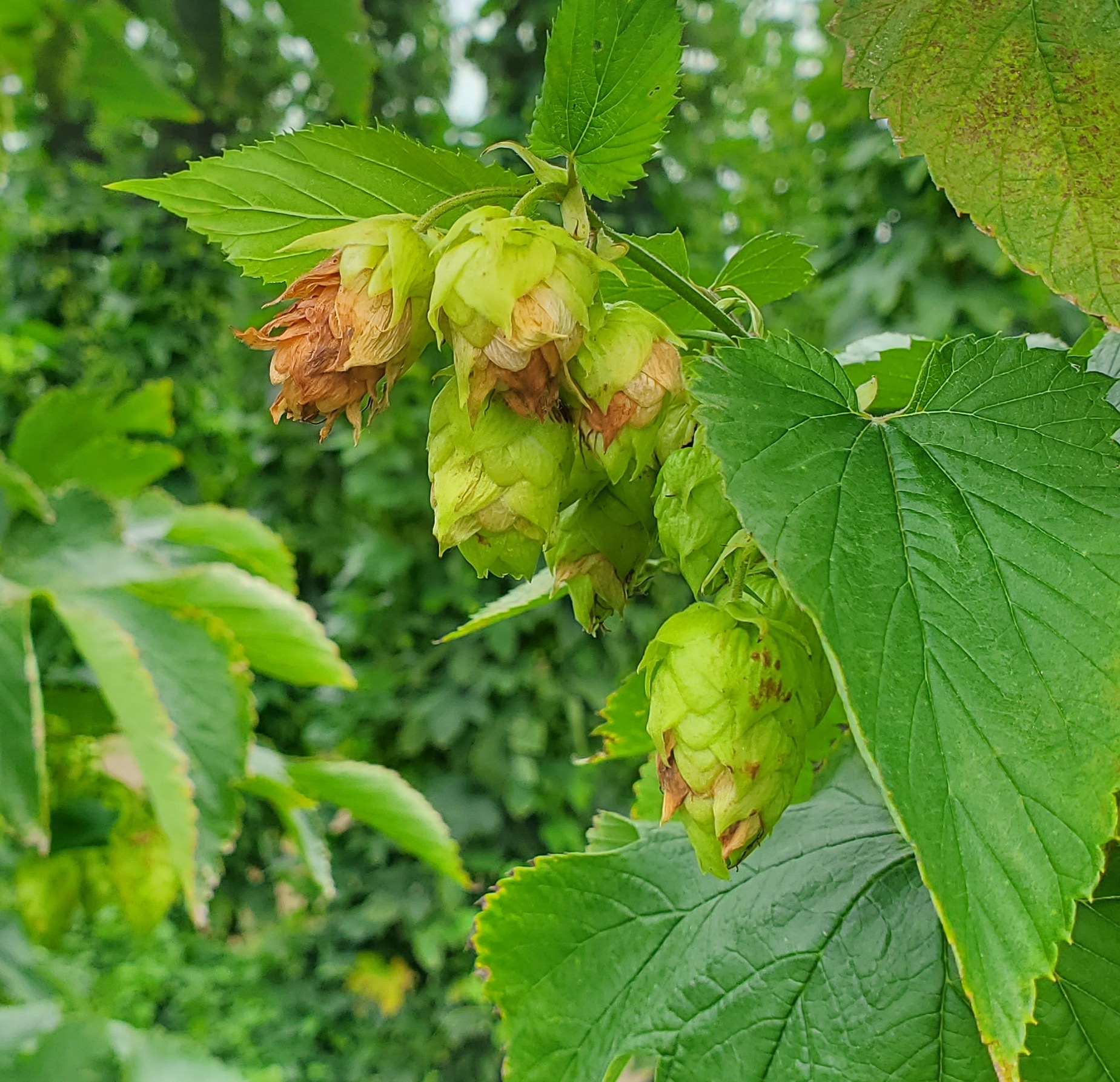Southwest Michigan fruit update – August 2, 2022
Grapes are entering veraison. Fall bearing raspberries are beginning to color up ahead of harvest.

Weather
Last week was cool and dry. Most days had high temperatures in the low 80s, lows in the 50s. No significant rain was reported for the week throughout the southwest corner of the state.
This week will be warmer and wetter. Most of the week will see high temperatures in the mid to upper 80s with Wednesday getting up into the mid-90s. Lows for the week will be in the upper 60s to 70 degrees. This means we should expect heavy dews every morning which help disease development. The big chances of rain will come Wednesday afternoon through the day on Thursday with more chances on Sunday.
With the cooler week last week, we picked up fewer degree days, 196 growing degree days (GDD) base 42, 138 GDD base 50.
|
Southwest Michigan GDD summary from March 1 through August 1, 2022 |
|||
|
Station |
GDD 42 F |
GDD 45 F |
GDD 50 F |
|
Benton Harbor (SWMREC) |
2695 |
2347 |
1809 |
|
Lawton (Lawton) |
2675 |
2329 |
1795 |
|
Fennville (TNRC) |
2495 |
2156 |
1633 |
|
Average for the SW region |
2644 |
2300 |
1768 |
|
Average last week |
2450 |
2127 |
1630 |
Tree fruit
Sunburn damage from June continues to become more noticeable as fruit continue to size up ahead of ripening. Japanese beetle populations are still relatively high but holding steady. Brown marmorated stink bugs of the summer generation are still early stage immature juvenile beetles incapable of flight. Spotted wing drosophila numbers are just now starting to climb.
Peach and nectarine harvest of Virgil, Starfire, PF9A-007 and Red Haven is starting in Berrien County with John Boy to start soon. Split pits are an issue with some varieties having a light crop. Brown rot problems are increasing in some orchards.

In cherries, leaf drop due to cherry leaf spot is becoming easier to see. Managing this disease should continue until at least mid-August so that trees overwinter in good shape.
In plums, Santa Rosa and some Ozark Premier are being harvested with Shiro winding down. The primary complaint continues to be sunburn symptoms on fruit due to high temperatures several weeks ago, brown rot, and bacterial spot.
Apple harvest of Earligold and Pristine has started. Symptoms of green crinkle are being seen this season in Pristine. This is a graft-transmitted virus that results in puckered fruit with sunken black spots. No cure is available for this disease. Preharvest treatments for harvest delay, stop drop, and shelf life are summarized in an article by MSU Extension apple specialist Anna Wallis.

Fire blight continues to be a problem in young orchards with susceptible varieties and fertile soils pushing growth. High rates of Apogee and perhaps copper sprays are about the only partial remedy at this point. Timing sprays for the diseases sooty blotch and fly speck is based on the number of hours of wetting since the last spray, which can be obtained from the Enviroweather sooty blotch and flyspeck model. However, spacing out fungicide applications in the mid-summer due to lower risk of these diseases can increase the risk for establishment of black rot infections on fruit.
Apple maggot flies are being caught for the third week in the Trevor Nichols Research Center trapline. Monitoring for this pest with sticky traps should switch from yellow panels to red spheres as the females start to switch to egg laying. Using adjuvants with penetrating properties are important for effectiveness of insecticides for woolly aphids.
Codling moth and oriental fruit moth are the primary insect concerns for most orchards. Farm-specific trap counts for these two insects are the best guide for judging the need for treatment. In the mid to late summer the generations of these insects are less distinct, making spray timing according to biofix models less helpful.
Small fruit
Grape veraison has begun in several hybrid varieties including Marquette, Geneva Red, Noiret and Vanessa. Disease management of phomopsis, black rot, downy and powdery mildews are the primary focus currently. The heavy dews we are experiencing means it is important to maintain protection against Downy mildew. Powdery mildew has been troublesome this year at a few sites, likely due to the hot and humid but dry June speeding up development early this year.
Grape berry moth third generation should begin this week. This is the timing for the next major spray window for this pest. Don’t forget to maintain coverage in a couple weeks. Failures in continued coverage for the third generation caused problems last year. Choose your products wisely. Many pyrethroids are not very effective in high temperature times of year.
Blueberry harvest is in full swing in southwest Michigan. Mid-season varieties are in their second pick in most areas. Disease focus should continue to be on early fruit rot management. Even with the rain the past few weeks, irrigation should be continued to maintain moist soils, especially in sandy sites. Early fruit size is generally good, but continued water helps keep the berry sizes high for subsequent pickings. SWD populations have increased again over the last week, likely due to the rain and cooler temperatures. The numbers are starting to rise ahead of the expected August surge. Larvae are now beginning to be found in ripe fruit, especially in unmaintained blocks.

Bramble harvest continues. Fall bearing and everbearing raspberry and blackberry bloom continues. Maintain fungicide programs to protect from fruit rots and monitor for spotted wing drosophila so you can stay ahead of the expected population increase coming soon.
Cranberries are still green
Black currants are still being picked.
Chestnut burrs are developing. This is the time of year to begin protecting the burrs from chestnut weevil infestations. There are two species of weevils. The large chestnut weevil flight window is in August and September. The lesser chestnut weevil emerges in September and October. Both species are present in Michigan, but many locations only have one species. Monitoring can be valuable in determining which species you have and when to start your sprays. See this article for more information about the two species: “Chestnut weevil: A potential pest of Michigan Chestnuts.”
Hop cone development continues. Harvest for early varieties will begin soon. Mildew damage is causing browning on the cones of some advanced varieties. This will reduce harvest volumes.

Upcoming meetings
The Blueberry Field Day is Aug. 24 at Trevor Nicholls Research Station in Fennville, Michigan. Register here.
Related articles
- 2022 Fruit insecticide registration update
- Southwest Michigan fruit update – July 26, 2022
- Michigan grape scouting report – July 27, 2022
This work is supported by the Crop Protection and Pest Management Program [grant no 2021-70006-35450] from the USDA National Institute of Food and Agriculture.



 Print
Print Email
Email
